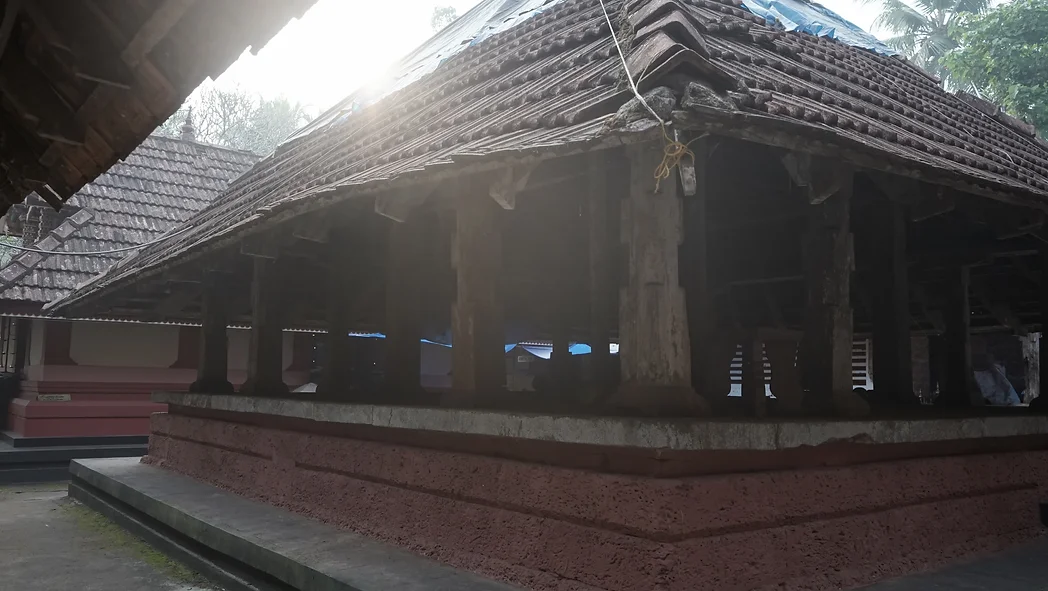Conservation architecture firm, Ezha, led by a team of three women, has been honoured with the esteemed Golden Leaf Award for architectural conservation by the Indian Institute of Architects (IIA) and the UNESCO Asia-Pacific Award for Cultural Heritage Conservation for their work on the Karnikara mandapam at the temple.
The co-founders of Ezha Swathy Subramanian, Savita Rajan, and Ritu Sara Thomas were recognised for their exceptional efforts in conserving the Karnikara Mandapam of the Bhagawati Temple, a structure with a history spanning nearly 600 years, located in Kunnamangalam near Karuvannur, Kozhikode.
Ezha mainly focused on heritage conservation, documentation, interpretation, and restoration of heritage structures and historic interiors of the temple.
The temple
In the sacred precincts of the Bhagawati temple, facing the Sreekovil (Sanctum Sanctorum), stands the Karnikara Mandapam, a partially open hall considered a hidden architectural treasure. This structure, the sole survivor from the temple’s earliest days, serves as a significant representation within the complex.

The mandapam symbolises the heart of a sixteen-petaled lotus flower (karnikara bindu), hence its name. It was constructed as a sixteen-pillared square hall and features a foundation of laterite stone (adisthana), a floor of mud bordered by granite, clay-tile roofing, timber pillars (sthamba), and structural elements for the roof. Over the years, the structure had fallen to neglect and decay.
The Kunnamangalam Bhagawati Temple is renowned for its annual seven-day festival, a celebration blending devotion and cultural heritage. During the festival, held in the month of Meenam, the Karnikara Mandapam takes centre stage for unique rituals. Rudhira Kolam, or Kolamvettu, reenacts the legendary defeat of the Asura Darika by Bhadrakali, while Kalamezhuthu captivates devotees with the intricate creation of the goddess’s image using natural powders on the mud floor. The festivities end with various venerations conducted in the mandapam, symbolising the divine connection between the deity and her followers.
The Conservation
The Mandapam had suffered significantly over the decades, with seepage and termite infestation causing widespread deterioration of pillars, beams, rafters, and the ceiling. The original finial was lost and timber elements had decayed due to cracks and fungal rot. Upon initial inspection, temporary support measures were implemented using scaffolding and steel tie-rods to prevent further structural damage, emphasising the urgent need for preservation.
The restoration effort of the Mandapam closely followed the ancient principles of Vastushastra. By integrating the concepts of Jirnoddhaarana (restoration) and Punarudharana (regeneration), the project aimed to conserve the original stone and laterite components while reconstructing severely damaged timber elements using authentic materials.

This comprehensive approach entailed the removal of cement additions, repair of broken roof tiles, and resolution of leakage issues, all while ensuring the structural and material integrity of the structure. The exposed laterite stone plinth was treated with a natural stone polish to maintain its timeless allure, while lime plaster (kummaya koottu) was used to enhance cohesion and facilitate moisture regulation.
Timber elements were rendered termite-resistant through the application of a medicated oil sourced from Vriksha Ayurveda, imbuing the surroundings with therapeutic properties and fostering an environment of tranquillity and well-being.
The entire restoration process was accomplished within a remarkably brief period of two and a half months.